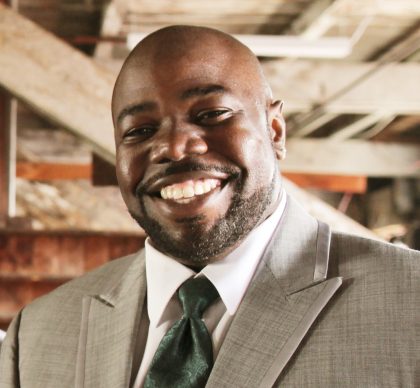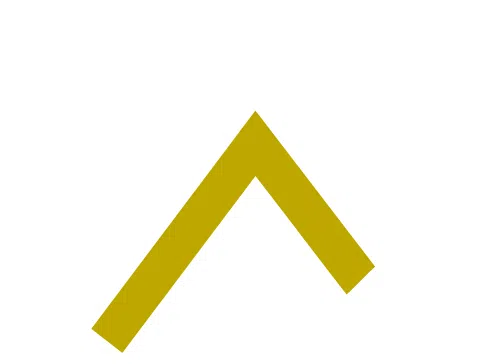In this month’s At the Helm, our Senior Vice President Suzanne Battit sat down with Coy Dailey, Director of Equity and Community Engagement at The Brearley School, an all-girls private school in New York City. Suzanne and Coy discuss what it means to be an anti-racist institution, what effective DEI work looks like, and what it takes to engage a community.
Suzanne: You began your career in education as a math teacher. Today, you are the Director of Equity and Community Engagement at The Brearley School. Tell us more about the path you’ve taken.

Coy Dailey
Coy: It’s a funny story. When I was a senior at Colby, a recent graduate with whom I was good friends called me up and said the school she worked at, Georgetown Day School, was looking for a math teacher. It felt like a natural fit since I was a math major and had taken a few education courses. So, I started teaching there straight out of college. I was 21 years old, teaching 6th through 8th graders – it was a little crazy! I taught there for seven years and actually met my wife there. We ended up moving to New York City, and I became a math teacher at The Montclair Kimberley Academy in New Jersey.
After a year, I moved on to The Packer Collegiate School. That’s when the shift in my career path started to take place. While the school searched for a fulltime diversity director, I became the Middle School Diversity Coordinator to keep important initiatives moving forward. That experience really sparked my interest in exploring leadership opportunities. From there, I became the Middle School Dean of Student Life. In that position, I focused on addressing the social-emotional needs of our students – how to give them a sense of belonging and foster a connection to the school. Equity was integral to that work. I wanted our students to understand what life could be like for someone else and how to have compassion for others. The three years I spent in this role were very valuable and led me to my next position – as the Director of Diversity and Equity at Bank Street School for Children, the N-8 school that’s a part of Bank Street College of Education on the Upper West Side.
Bank Street provides a very progressive education; the school is deeply committed to incorporating the students’ perspectives and needs into their curriculum. And diversity and equity were always at the forefront. I learned a lot from my colleagues and the students during my time there. We had conversations about race, about what it means to be advocates of social justice in the world, about the agency each of us has and how we can use it to speak up for and support others.
Then, last Spring, a former colleague of mine reached out to me about an opening at The Brearley School. I was on the fence about applying, but she really encouraged me – she felt like Brearley was about to do great things in terms of DEI. This job opening coincided with the time when independent schools nationwide were really reckoning with their own diversity efforts. Brearley’s Board of Trustees had publicly stated its commitment to being an anti-racist organization. I was impressed; a lot of schools had made statements, but Brearley was actually putting its money where its mouth was. So, to get to lead as the Director of Equity and Community Engagement in this kind of committed environment – it was an exciting opportunity. Additionally, this provided me with a chance to return to the K-12 community, not to mention to work at an all girls school committed to affirming women – which seemed like a wonderful learning experience as the father to a daughter!
You joined Brearley last July. What have you and your team been focused on? What are your greatest priorities and challenges of late?
Let me start with the challenges. One of the greatest challenges is that adults tend to put their own lens on what DEIA means and they don’t realize that the definition is impacted by the context. So for me, in the world of education, this is what DEIA means:
- Diversity means who is in your community and how you are ensuring that there is a wide representation of folks with different experiences and perspectives.
- Equity means making sure the members of your community have what they need to succeed. And different people need different things. I always give this example: I have 20/20 vision, but if someone needs glasses to have the same level of vision as me, they should have them.
- Inclusion means people feel a sense of belonging. Someone might be invited to a dance, but do they feel comfortable dancing? I want our students to feel like school is their second home.
- Finally, while it is not included everywhere, at Brearley we also believe anti-racism is core to our DEI work. To me, anti-racism is about examining existing structures to ensure you are removing barriers that shouldn’t be there while creating opportunities for your community.
So, when you break it down into these simple terms, I think the DEI work makes sense. But when there’s misinformation about what these words mean, it gets challenging.
My team is really focused on four guiding principles this school year:
- We’re trying to educate our students to practice principled engagement in our community. Brearley students have a big impact on the world, so we want to make sure we give them the tools to engage meaningfully.
- We’re working on moving our community from diversity to belonging. So many institutions are stuck at diversity, but we can’t just focus on bringing people in. We need to make sure that once they’re here, they feel connected to the space.
- Throughout all of this, we’re centering the students and their experiences. We are committed to supporting students’ agency and voice in their experience of a Brearley education.
- And finally, we’re looking to engage the whole community. Naturally, when you have a community as diverse as ours, not everyone is on the same page all of the time. But I’m interested in how we can create a system and/or kind of programming that everyone can tap into.
DEI work can seem daunting, but I think these four principles help keep us grounded and focused. We’re teaching our students about the world around them and empowering them to support each other.
Throughout the pandemic, what strategies have you found most effective in engaging your community?
I think we were most effective when we went back to the basics, when we focused on providing our community with opportunities to simply talk with one another and be together (even if it was virtually). Our parents wanted to hear from each other about how they were juggling work, helping their kids attend virtual school, navigating the pandemic, etc. We used prompts that focused on fostering connection: How are you really doing? What made you smile today? What frustrated you today? COVID reminded us that yes, academics are important, but you can’t focus on academics if you don’t feel grounded.
We also created programming around how to support kids of color attending predominantly white schools – especially during the pandemic and with the racial strife we were witnessing. Parents were looking for talking points and tools, so we brought in experts to help.
At the end of the day, my only goal was to provide parents and students with the community and support they needed – whatever it looked like at that time.
What has been key to forming a strong partnership with school leadership and other departments?
I am a big collaborator. Even as a director and the “boss” of four other staff members, I see my real power as being in the relationships I build. Anyone I partner with, I tell them the same thing: “I’m a one in 10 person. I’m going to have 10 ideas, and one of them will be gold. I just don’t know which one, so I’ll keep rattling them off until you tell me.” I want my coworkers to help me do my best work, and I strive to do the same for them. When we have that understanding and that commitment then we know that any feedback we give each other isn’t meant to hurt, it’s meant to make each other and the institution better. And the best part is when we become true thought partners – when we can call each other up to ask for the other’s input on anything. Being able to share our perspectives and ideas – it requires trust. Building that foundation is key.
I also think what’s helped me form such strong relationships throughout the school is recognizing how diversity and equity work is integral to every department. Take advancement for instance. A lot of their work is interacting with former students to raise funds. So, if I haven’t done my job successfully, and those former students don’t think positively of their time here, then my advancement colleagues are going to have a hard time. Or take admissions. They’re focused on bringing people to the school, but I have to make sure those students and their families are taken care of once they arrive here. So, my work really intersects with everyone at the school, and it’s something I really enjoy. I want to engage with others. And, we should also have fun! This work isn’t always easy, so we need to be able to laugh together.
What is on the horizon for Brearley? What are you hoping to accomplish?
There are some big things underway! Right now, we’re revising our mission statement. We want it to better reflect our commitment to anti-racist initiatives. It’s been a very insightful process, and one in which we have been able to engage our entire community. Through guided exercises, we’ve been able to identify a list of shared, institutional values that resonate with us all. It’s been a long process, but I think it will be a great outcome – for us to have a clear mission that represents what we truly stand for.
We’re also updating Opening Doors, A Strategic Vision for Brearley, which was developed in 2014. We started this year developing a strategic plan for our DEIA work, but we recognized that If we are truly committed to DEIA, as I know we are at Brearley, then it needed to be incorporated into every aspect of our school. So we pivoted to instead update our school-wide strategic plan. It’s been exciting to be part of that work – and also a little stressful! But Brearley is really an institution that feels strongly that if you put something in writing, it is because you truly believe it. So while it may take a while to finalize the plan, I know that the end product will be really great. I’m excited to see where we end up.
What advice would you share with schools/organizations who do not have a dedicated DEI department or role? How can they still advance these ideals in a meaningful and impactful way?
If an organization doesn’t have a DEI department, I think the first question they need to ask themselves is, “Why?” If the answer is “because DEI is part of everyone’s job,” then I typically want to know, “If that’s the case, then why isn’t the work being done? And who is being held accountable?” If you have accountability built into your current model, then you can find success without having a DEI department – but usually there isn’t any accountability until something goes wrong. I think having a dedicated DEI department shows that you’re truly committed. By putting resources towards it, you are making it a priority.
Then, if you do hire a director of DEI (or a similar position), what resources and support will that person receive? What are you expecting them to accomplish? And if they do come up with a strategy, how invested are you in its success? Be realistic. A lot of companies in recent years have committed themselves to antiracism, and I’m curious if they know what that actually costs. Are they willing to do the work and be uncomfortable? Discomfort isn’t a bad thing – it’s necessary for change. And if you get through that, think of how strong you will be.
Is there anything else you would like to share?
Just one tidbit to connect my career path so far. I never thought my roles at Colby—being a promotions director for the radio station and also a spa coordinator—would lead me to where I am today. But when I think about it – at Colby, my jobs were about creating programming, bringing people in, enticing them. I had to be creative and think outside of the box, and that’s how I look at my job now. I have to get people excited about diversity and equity work. I’m trying to find our common interests and tap into them so we can come together, in the same place and at the same time, to create real change.


